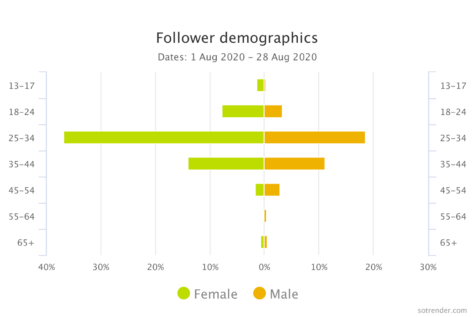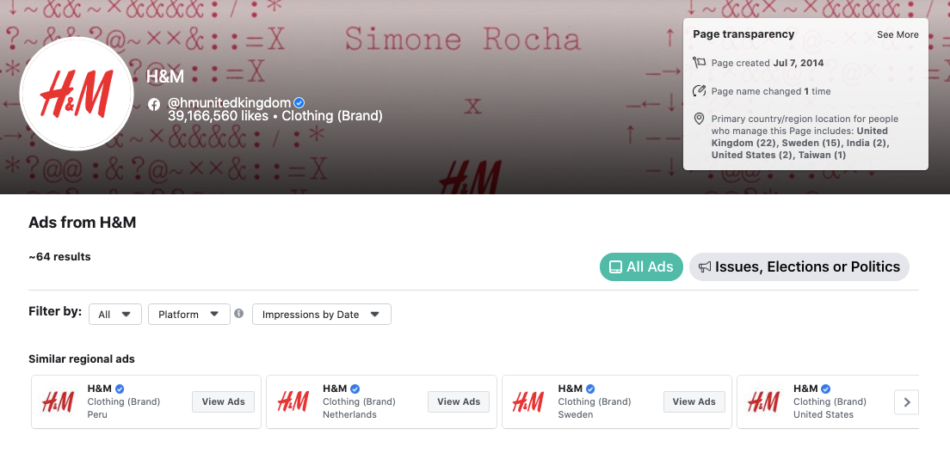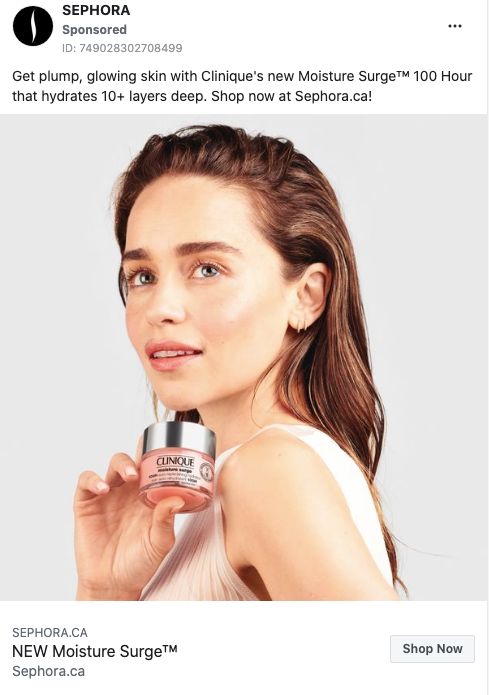Facebook Ad optimization can be overwhelming. When you look at all of the things you need to do to upgrade your ads, it looks like you’re way in over your head.
Seriously though, you shouldn’t worry about it. 😉 We’ll guide you through the different ways you can optimize your Facebook Ads to catch your audience’s attention and get them to convert.
Facebook Ad optimization is your priority
First of all, is your target audience actually going to find your product that easily on Facebook? Well, yes, actually. In 2021, 78% of US consumers indicated that they discovered a new product through Facebook, and another 59% found one through Instagram. Clearly, Facebook Ads can do a lot of good for your brand.
There’s a lot that goes into optimizing your Facebook Ads, though. You can’t just grab a picture from Unsplash or Pixabay, add some text on top, and call it a day. You need to consider different elements of your ad campaign to make sure it pays off.
What happens if you don’t take all of this into account? Are the results really that bad? In 2017, around 60% of small businesses didn’t manage to get their target audience’s attention with their ads. For a bigger corporation to experiment with their ad spending, it’s not the worst thing if one of your ad campaigns fails (once in a while). On the flip side, smaller businesses don’t have endless resources, and they need to plan a Facebook Ad budget to make sure they don’t lose too many of their resources.
Ignoring some of the key components of planning a campaign will only get you in trouble, but there are ways around it. There are tons of articles about the reasons why your Facebook Ad campaign isn’t converting or going into detail about why your ad campaign is failing. All of these articles will tell you the same thing: you didn’t plan carefully enough or optimize your campaign correctly. To save you time, we’ll summarize some solutions to these issues.
Now let’s look at all the different ways you can actually optimize your Facebook Ads to reach the right audience and improve your conversion rate.
Learn more about your audience demographics
This is undeniably one of the first things you should be doing. How are you going to market your product if you don’t know who you’re marketing it to? Are you targeting individual consumers or whole businesses/industries? What generation are they in? Where are they from?
These are just a few of the things you should find out if you want to narrow down or broaden your target audience to get the best results. Is your product is supposed to be marketed to people in the country where your company is based? If yes, then you obviously shouldn’t select an audience beyond the country’s borders. You get the idea.
How can you learn more about your audience, though? Well, you can start off by opening up your Facebook Insights or using a third-party app to tell you more about their demographics.
Here’s what that looks like in Facebook Insights…
And this is what it looks like in Sotrender, a third-party app used for analytics and community management.
You’ll notice that they’re quite similar. The difference is that with Sotrender, you can pick a custom amount of historical follower data. The other difference is more aesthetic, but you can click on Sotrender’s graph to hide one of the genders and focus on one more than the other. If you only wanted to see male demographic data, you could simply toggle the “female” label.
Regardless of your choice of tools, you need to know more about your target audience. Track their demographics and adjust your strategy to fit them better.
As for other audience characteristics such as their interests, you’ll get to learn more about it in the next section.
Prepare content that matches their interests
This is a big one. Besides targeting your audience based on their location, language, and so on, you should pick people who are actually interested in what you have to offer.
You’ll do that by choosing interests carefully. Let’s say you’re a local restaurant, you’d have to stick to the food and drink category while specifying that the audience should be close to your location. You obviously wouldn’t need to bother targeting people who are interested in shopping and fashion.
There are plenty of categories you can check out and specify. Seriously, you could even narrow down your audience according to relationship status, job title, industry, and online behavior. The possibilities are pretty endless. As you can see, you have to take the time to rationalize your choices. 😉
However, there’s a way to get to know even more specific information about your audience. You could use artificial intelligence, specifically topic modeling, to help you find what your audience is talking about on your Facebook Page. By using topic modeling, you’ll learn more about…
- how their interest in a topic changed over time,
- when a new topic started to become relevant to them,
- and the most popular topics that come up in a discussion.

Topics discussed over time in Sotrender’s report
How can you use that to your advantage when optimizing your Facebook Ads? It’s more basic than you might think. For example, a makeup brand might find out that many of their users are talking about purchasing a specific set of products because there is going to be some type of festival. Instead of sending out employees to scout for trends and report back to the brand, you can just analyze what the users are already saying. You’re basically getting insights straight from the source.
Does this sound like something you might get value out of? Message our Sales department to see how you can use artificial intelligence to improve your Facebook marketing strategy.
Monitor your competition from time to time
Why does everyone bring up monitoring your competition? The answer is that by monitoring their ads, you’ll be able to optimize your own. You’ll find out what they’re communicating at the time, what products they’re promoting, and whether their audience likes the graphics, content, or tone that they’re using. On top of that, you might find out that they’re recruiting new employees for a specific department or position. All of that can reveal how their company is doing, whether you should watch out for any surprises, and what you can improve on.
In case you didn’t know, you can check in on your competitors by simply accessing the Facebook Ad Library. Just remember that usually, your competitor’s ads will only appear while they’re still active. That means you’ll have to keep checking the library to gather as much information as you can. We’ll show you a few examples of what you’ll be able to see in the library.
I wanted to see what H&M’s UK-based Page was up to. I found their Page in the library and found that they have quite a few active ads in March 2021.
At the top of their profile, you’ll find out when they set up their Page, some basic information, and where people tend to see their content.
There are a few ways that you can filter the ads, but what matters is that you will be able to see all of the ads in one place like this:
Pretty convenient, right?
Just don’t forget to check your competition’s organic content, too!
Most of the time, you and your competition should be posting organic content to keep your followers interested. After all, who wants to constantly be exposed to ads? They’re not following your Page on Facebook so that you can push them to buy a product every other day. What’s more, it’s expensive to keep ads running all the time. You can still post organic and free content that promotes your brand and helps you connect with your audience.
Since you’ve gotten to the point where you know a bit more about the competition’s ads and content, bring all of that information together to plan your own content strategy. Figure out the best posting times on Facebook, what types of posts they like best, and how to prepare them. If you’re stuck on coming up with ideas, we have a list of Instagram content ideas that can inspire you. Just remember that the content you prepare should match the goals of your campaign. 😉
Make sure to set up the right goals
Picking an ad objective is a necessary step in publishing your Facebook Ad. You need to be able to measure how well your ad performed, but first, you have to decide what you’re going for.
In this section, we’ll briefly go over which objectives are available and how you can make the right decision.
Firstly, there’s awareness. The name is pretty self-explanatory, but essentially, it means that you want to increase brand awareness or reach by letting people know your brand exists.
Next up, you have consideration. You want to incentivize people to find out more about your business and engage. The goals available here include traffic, engagement, installing an app, video views, lead generation, and messages.
Finally, conversion. Here, you want people to make a purchase, but this can come in a few different ways. Encouraging users to visit your local store and displaying your online catalog are two of the ways you can use the conversion goal.
How would you choose a goal based on what your business needs, though? We’ll walk you through an example. You’ve just opened a specialized online shop and you want more people in a specific country to know that it exists. In the beginning, you’ll want to use an awareness campaign.
Now let’s say you created an application so that users can browse through your online shop more easily. Here, you’d go for app installs in the consideration objective. However, if you want to have more people visiting your website, you’d go for the traffic goal.
Alright, so you’ve got a significant amount of people to download the app and more people are visiting your site. You’re now at the stage where you want to show off some of the products users can buy from your shop. In this case, catalog sales from the conversion objective would make the most sense. Display a few different items with the price and a “Shop Now” CTA next to it, and you’re good to go.
Now we can move onto designing and preparing your ad so it actually gets noticed. 😉
Experiment with different elements
So you’ve picked your goals and are ready to prepare the content for the Facebook Ad campaign. Great! Now you need to play around with different elements to construct the best ad for your audience.
Let’s start with the graphics. We always recommend that you start to think about your aesthetic ahead of time. What colors are you in your logo? What type of aesthetic are you going for – minimal or more contrast? How does your aesthetic fit in with your audience and your product? Here are a few ads for comparison so you’ll see what we mean.
Sephora is a chain that sells makeup and cosmetic goods across the world. Since they carry products from so many brands, the ads they post can vary slightly from time to time. Let’s compare Sephora’s Facebook Ad for Miss Dior…
To the one featuring Clinique…
There is definitely going to be overlap between customers who buy Clinique and Dior products from Sephora, but it wouldn’t make sense for the marketing specialists at Dior, Clinique, and Sephora to have the exact same ads running. It’s necessary for them to differentiate between what the two brands can offer, even if they’re both sold at Sephora. They differentiate between the two rather simply. Miss Dior featured a lot of pink and red and had a caption that focuses on signaling femininity, without a Call-to-Action (CTA) present. On the other hand, Clinique’s ad was mostly focused on a single health benefit and included a CTA. Makes sense, right?
Now consider a brand that is focused on solving an ecological problem like Chilly’s Bottles. Their Facebook Ad included a caption referencing eco-friendly living, uses an earthy/neutral color scheme, and is fairly minimal. Everything about it is completely different from what both brands at Sephora were going for.
Do you see what we mean by experimenting with different elements? It comes down to experimenting with
- aesthetic,
- copywriting/the caption,
- and content.
There’s no way to get the answer after just one ad, that’s for sure. You can get an educated answer after running multiple campaigns and keeping track of common factors in the best-performing ads. Play around with a combination of these three and analyze your Facebook Ad performance to see what works best.
Keep up with metrics
Once you mastered the basics of campaign creation, it is time to get insights on how your campaigns really perform. If you decide to use an advanced analytics tool like Sotrender Ads, you can track really important metrics that lay at the core of effective social media campaigns.
Sotrender Ads enables you to:
- analyze key metrics that are not available in Facebook Ads Manager (like audience share or comments sentiment),
- check and compare performance of your existing ads and plan future ones with better knowledge,
- generate comprehensive reports in less than a minute, saving a lot of time every month!

Comparing campaign reach in Sotrender Ads
Adjust what’s missing until you master Facebook Ad optimization
We covered so many issues in this article. You need to make sure that you’re optimizing your ads way before you start promoting them on Facebook. To recap:
- Know who you’re advertising to
- Advertise the right topics
- Learn from your competition’s strengths and weaknesses
- Use Facebook Ad goals correctly
- Experiment with the content of your Facebook Ad
- Check your Facebook Ad analytics to make sure you’re on the right track.
We promise you that you’ll get the hang of it. Facebook Ad optimization takes practice and with more experience and resources, you’ll get better at it each time. If you’re worried about using up too many of your resources, you could benefit from Sotrender’s Facebook Ad budget report. We’ll be happy to help you in any way we can to make sure that your ad-spending is realistic but simultaneously gets you better conversion rates.
Got any other tips for marketers that want to optimize their Facebook Ads? Drop your recommendations in the comments!













